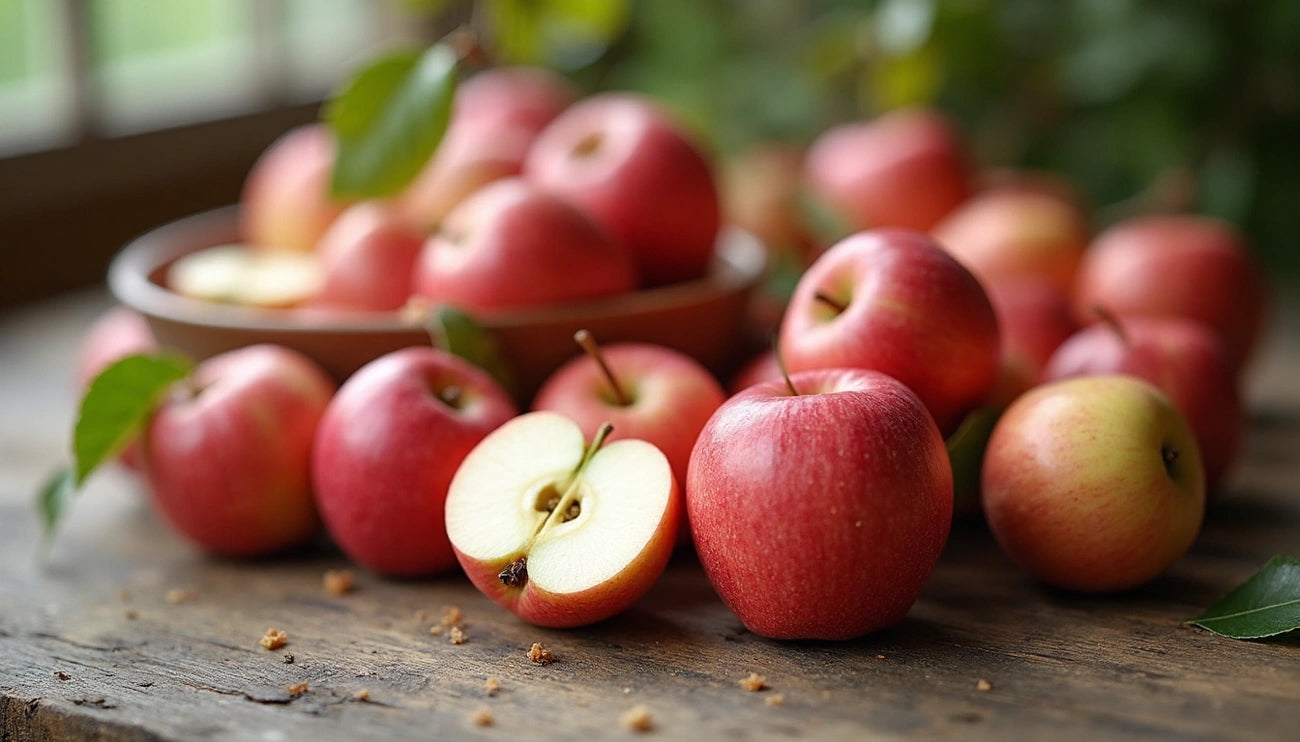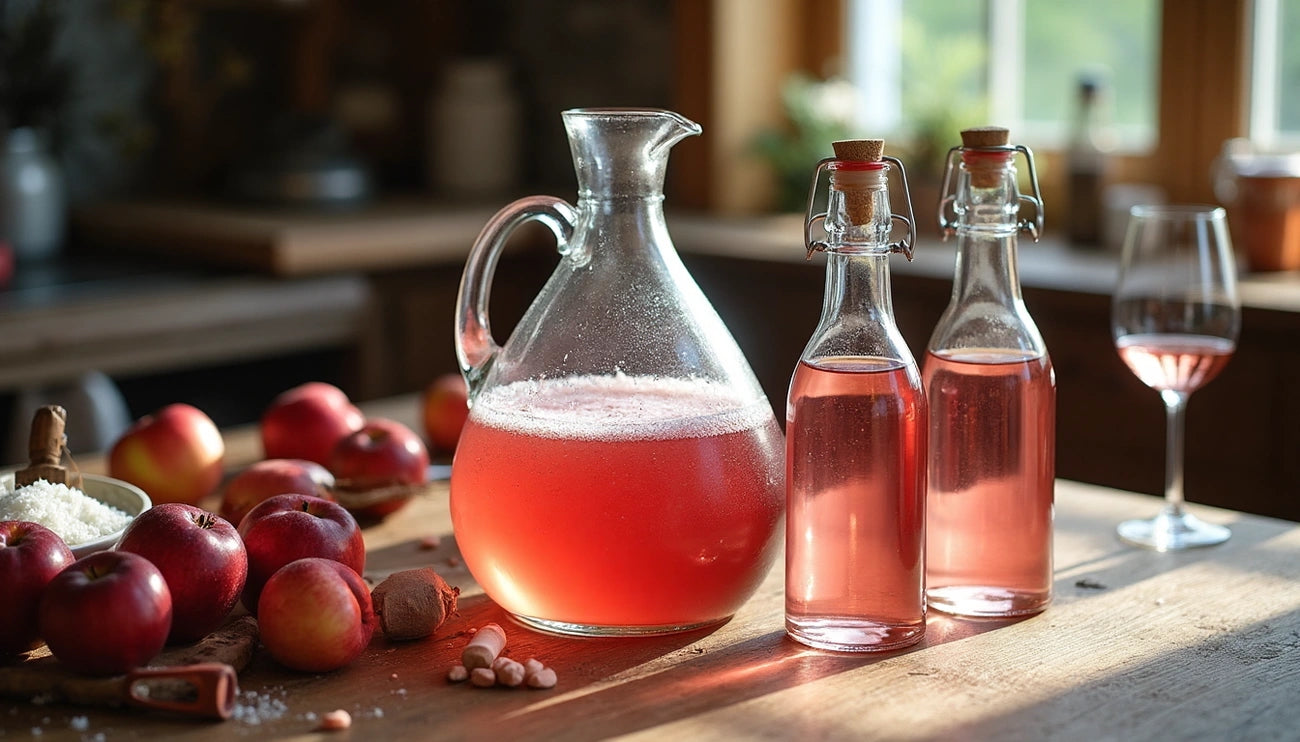Is crabapple wood good for smoking? Many pitmasters have asked me this question as they look to try different wood options. Crabapple might not be as common as other smoking woods, but it brings impressive versatility to the table. The wood burns well and produces about 27.2 million BTUs per cord. You'll get a light smoke that creates a mild, sweet and fruity fragrance.
My experience shows that crabapple wood shares many qualities with standard apple wood. Most experienced smokers can barely tell the difference between the two. The wood does come with some challenges - those thorns can be a pain during processing. You'll need to season the wood properly to avoid any unpleasant smoke. This wood is a great choice to smoke, barbecue, and roast your food. The BTU ratings are slightly lower than popular hardwoods like beech (27.5) or Gambel Oak (30.7). Let me share everything you need to know about using this versatile wood to smoke your food.
Why Pitmasters Use Crabapple Wood for Smoking
Serious pitmasters grab crabapple wood, and with good reason too. This underrated smoking wood brings unique qualities that make it a valuable part of any barbecue arsenal.
Mild, fruity flavor profile
The sort of thing I love about crabapple wood is its gentle yet distinctive taste profile. It adds a mild, sweet smoke that boosts your carefully prepared meats. Many stronger woods can overpower food's natural flavors, but crabapple creates a subtle fruity essence that people find hard to resist.
The wood's natural sugar content turns the meat's exterior into a caramelized delight during smoking, which creates that perfect sweet-savory balance. This quality makes crabapple shine especially when you have delicate flavor needs. The wood produces a rich, fruity smoke that pervades the meat without any bitter undertones.
Ideal for poultry, pork, and fish
Crabapple wood pairs beautifully with several meats. Its subtle sweetness works great with:
- Chicken and wild fowl
- Pork (especially ribs, shoulders, loins, and ham)
- Fish
- Beef
- Game and lamb
The gentle nature of crabapple smoke pairs perfectly with lighter meats where natural flavors should shine. To cite an instance, see how it adds just enough character to chicken without masking the poultry's natural taste.
Low smoke and spark output
Crabapple offers practical benefits that make smoking sessions easier. The wood burns clean, with minimal popping and sparking. This safety feature cuts down the risk of unwanted fires from stray embers – a real concern for outdoor cooking enthusiasts.
Crabapple has very little resin compared to softwoods like pine and fir. This low resin content stops harsh soot from leaving an unpleasant residue on food. The smoke stays light and pleasant throughout cooking.
Crabapple wood strikes an excellent balance – enough flavor for great results yet gentle enough to use alone or mixed with other woods. Pitmasters who tried crabapple say they're "perfectly satisfied with the results", proving its worth as a versatile and reliable smoking wood.
How to Process Crabapple Wood for Smoking Chips
You need the right technique and patience to turn a crabapple tree into perfect smoking chips. This versatile wood will be ready for your smoker after you follow some specific steps.
From tree to chip: step-by-step
The process starts with careful cutting. Breaking down the process makes it easier:
- Cut the tree into sections you can handle and remove small branches with green crabapples that show healthy wood
- Split bigger pieces into chunks that fit your smoker
- Cut the wood into 3-4 inch lengths to make chips
- Green wood through a table saw is dangerous and won't work well
- A radial saw or miter saw works better than a table saw to make dust or small chips safely
A chipper can speed up the process by a lot. Tree services can chip branches in seconds, which works great for bigger quantities.
Drying and storing tips
Quality smoke needs proper seasoning. Your crabapple wood's drying time changes based on several things:
Small chunks and chips need a few weeks to about two months to season. Bigger pieces need more time. Crabapple wood's cracking patterns show it's seasoning within a week of cutting.
Keep your wood in a dry place with good airflow. Stack the pieces so air moves between them to dry faster. Dust or fine chips might need less moisture—bake them in an oven at low heat for 30-40 minutes to reach the ideal 8% moisture.
Bark on or off: what matters?
Smoking fans often ask about bark. Expert pitmasters say smoking wood's bitter taste usually comes from bark. That's why you should remove bark from your crabapple chips before use.
Branches with lots of bark need extra work to clean. Small branches have more bark, so try to harvest from the tree's larger sections when you can.
These processing steps will give you premium smoking chips that add a mild, fruity flavor to your next barbecue creation.
Crabapple vs. Other Smoking Woods
Your barbecue results depend heavily on the smoking wood you choose. A good understanding of how crabapple stacks up against other popular woods will help you make smarter choices for your next smoking session.
Crabapple vs. Apple
Most pitmasters call crabapple and apple wood similar in their smoking characteristics. These woods create matching flavor profiles, and many enthusiasts can't tell them apart. Some experienced smokers say that crabapple smoke can be even sweeter than regular apple wood. Both woods add a mild, fruity essence that improves poultry and pork without overwhelming the meat's natural flavors.
Crabapple vs. Hickory
Crabapple and hickory are quite different from each other. Crabapple gives a gentle, sweet profile, while hickory produces a bold, rich smoke that many describe as having a "heavy bacon flavor". Hickory remains a top choice for smoking, especially when you have classic BBQ dishes like ribs and pulled pork. Crabapple's milder nature works better when you want subtle flavors instead of strong smokiness.
Crabapple vs. Cherry
Cherry and crabapple share fruit wood traits but keep their unique characteristics. Cherry creates delicate, fruity notes and adds a hint of red color to meats. Crabapple brings its own subtle fruity profile to the table. Both woods work well with poultry, pork, and beef. Your choice between them usually depends on personal taste and what your recipe needs.
When to mix woods for better results
You can create unique flavor profiles by mixing different smoking woods that single woods can't match alone. Crabapple works great with stronger woods like hickory if you want sweetness and depth. BBQ experts suggest mixing crabapple and ash to get amazing results with lamb. You can make your own signature blend to balance intensity and highlight complementary flavors.
Safety and Maintenance Tips When Using Crabapple Wood
Safety and maintenance are crucial parts of smoking with crabapple wood. These elements help protect your equipment and ensure your food stays safe.
Avoiding creosote buildup
Creosote is that black, tar-like substance that builds up at the time wood doesn't burn all the way through. This creates a serious fire hazard. Crabapple wood's creosote forms in three distinct stages: it starts as flaky deposits, turns into sticky tar, and hardens into a shiny substance. The risk becomes real because creosote can catch fire at temperatures as low as 451°F and cause dangerous chimney fires.
Here's what you need to do to keep creosote at bay with crabapple:
- Stay away from slow, smoldering fires that make too much smoke
- Make sure your smoker gets enough air flow
- Take off all the bark since it makes things taste bitter
- Run your smoker at higher temperatures so the wood burns cleaner
Properly seasoning to reduce smoke
Well-seasoned crabapple wood burns a lot cleaner and makes less creosote. My experience shows that 18-24 months of seasoning gives the best results. This long drying period brings down moisture levels just right, and the wood burns clean without making too much smoke.
Green or wet crabapple creates excess smoke that ruins flavor and leads to more creosote. The wood's moisture content should hit around 15-20% to burn its best.
Handling thorns and tough branches
The thorns on crabapple wood are a real safety concern. Not all types have them, but the ones that do can really hurt you. Heavy-duty gloves are a must during cutting, bucking, and splitting.
On top of that, crabapple's dense structure makes it tough to split. Power splitters are a safer bet than splitting by hand, especially when you're dealing with bigger pieces that have thorns.
Conclusion
Crabapple wood definitely needs more recognition among smoking enthusiasts. This versatile wood delivers excellent results with its mild, sweet profile that improves but never overwhelms meats. The subtle fruity notes work great with poultry and pork and still complement beef and fish. On top of that, it burns clean which makes smoking sessions safer and easier to manage compared to resinous alternatives.
Many backyard pitmasters might hold back because of processing challenges, but the results are worth it. Proper seasoning is vital - the wood becomes premium smoking material when you let it dry long enough. People with access to crabapple trees can harvest their own supply. Anyone without direct access can browse our selection of crabapple trees to grow their own eco-friendly source of smoking wood.
The wood's distinctive flavor profile makes it worth the extra prep work compared to store-bought smoking woods. It works great alone or blends perfectly with other varieties to create custom flavor combinations. Your holiday turkey, weekend ribs, or delicate fish filet will taste better with crabapple wood's perfect balance of subtle sweetness and clean smoke that lifts your barbecue game. This underappreciated wood is nowhere near as common as traditional options but ended up earning its place in every serious pitmaster's collection.
FAQs
Q1. What type of flavor does crabapple wood impart when used for smoking? Crabapple wood imparts a mild, sweet, and fruity flavor profile when used for smoking. It enhances the natural flavors of the meat without overpowering them, making it ideal for various types of dishes.
Q2. Which meats pair best with crabapple wood for smoking? Crabapple wood pairs exceptionally well with poultry, pork, and fish. It's also suitable for beef, game, and lamb, adding a subtle sweetness that complements these meats nicely.
Q3. How long does it take to properly season crabapple wood for smoking? For optimal results, crabapple wood should be seasoned for 18-24 months. This extensive drying time reduces the moisture content to ideal levels, ensuring efficient burning with minimal smoke production.
Q4. How does crabapple wood compare to other popular smoking woods like hickory or cherry? Crabapple wood offers a milder, sweeter smoke compared to hickory, which has a bold, rich flavor. It's similar to cherry wood in its fruity notes but has its own distinct subtle profile. Crabapple is often preferred when a gentle flavor enhancement is desired.
Q5. Are there any safety concerns when using crabapple wood for smoking? When using crabapple wood, it's important to avoid creosote buildup by ensuring proper airflow and maintaining higher smoking temperatures. Additionally, some crabapple varieties have thorns, so wearing protective gloves during wood processing is recommended for safety.




Leave a comment
This site is protected by hCaptcha and the hCaptcha Privacy Policy and Terms of Service apply.